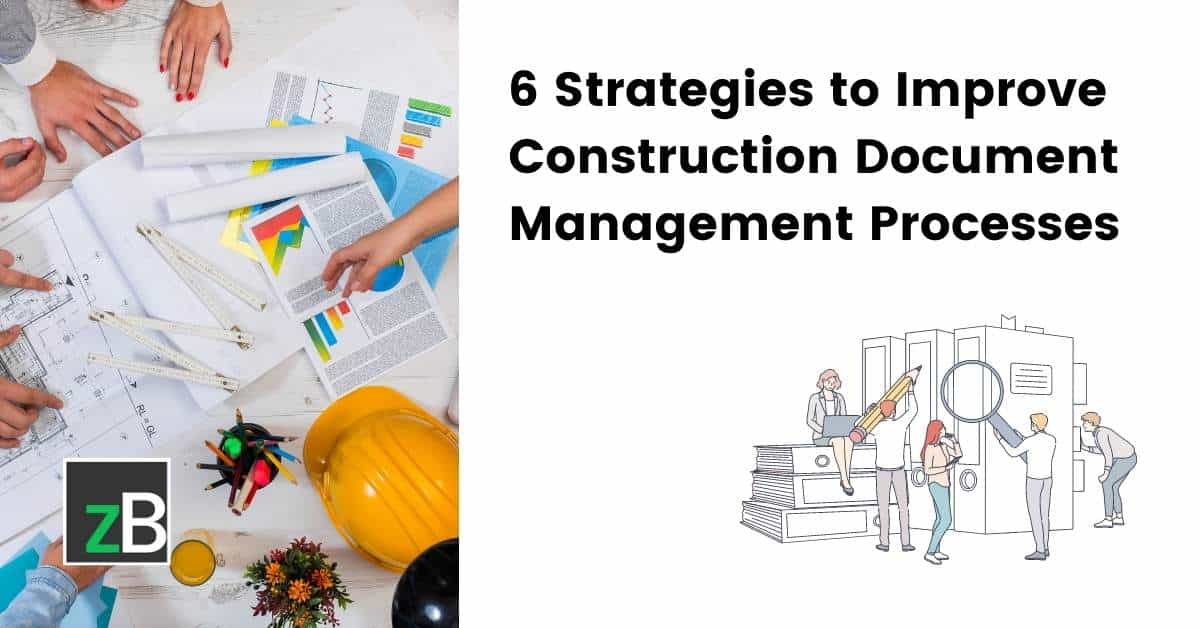Optimizing Task Partnership: Architect's Ideal Practices in Construction File Management
In the detailed realm of building jobs, the reliable administration of building and construction papers stands as a cornerstone for success. Designers, with their meticulous interest to detail and ingenious design options, are tasked with managing a harmony of timelines, sources, and stakeholders. Amidst this complexity lies a vital question: just how can architects enhance cooperation processes to improve task end results? By exploring essential techniques such as leveraging cloud-based systems, developing durable interaction protocols, and guaranteeing information protection, engineers can elevate their record administration methods to brand-new elevations.
Leveraging Cloud-Based Systems
By transitioning from traditional paper-based systems to shadow services, engineers can enhance collaboration, boost file accessibility, and boost overall task effectiveness. This accessibility advertises seamless interaction and coordination amongst project stakeholders, leading to fewer mistakes and delays in the building and construction process.
Furthermore, cloud-based systems offer a safe and secure atmosphere for saving delicate project details, offering file encryption, regular backups, and customer consent setups to protect information stability. Engineers can also take advantage of the scalability of cloud options, enabling them to readjust storage space capability and capability based on job needs. Overall, leveraging cloud-based systems empowers designers to maximize their construction file management processes, driving higher cooperation, performance, and success in their projects.
Executing Variation Control Equipment
Having actually developed the advantages of cloud-based systems in construction file administration, designers can currently boost their record control processes by implementing Version Control Solution. Version Control Solution (VCS) are necessary devices that track adjustments in documents, ensuring that team members are always collaborating with the current and most accurate information. By executing VCS, designers can maintain a centralized repository where all project documents are stored, enabling smooth cooperation while decreasing the threat of mistakes and variation disputes.
One secret advantage of Version Control Systems is the ability to track the full background of paper modifications, enabling individuals to return to previous versions if needed (construction document management). This feature is particularly beneficial in building and construction tasks where style iterations and modifications prevail. Furthermore, VCS facilitates better communication amongst staff member by offering a clear audit trail of that made particular modifications and when they were made. This transparency not only boosts accountability however also helps in dealing with disputes or disparities that may arise during the project lifecycle.
Developing Interaction Procedures
To make certain efficient and reliable project sychronisation, engineers should develop clear and durable communication protocols within their building record management procedures. Interaction protocols define the techniques, regularity, and networks where staff member exchange details, updates, and feedback. One necessary facet of establishing these procedures is figuring out a central interaction system where all project-related discussions and document sharing can occur. This platform can be a project monitoring software application, e-mail threads, or cloud-based storage space remedies. By setting guidelines on how information is distributed and how staff member connect with each other, architects can simplify the flow of information and prevent miscommunications or hold-ups in the construction process.
Furthermore, interaction methods must likewise include guidelines on just how to take care of conflicts, adjustment orders, and urgent problems that might arise throughout the job lifecycle. Establishing a structured technique to communication ensures that all stakeholders get on the exact same web page, promotes transparency, and inevitably adds to the effective completion of the building and construction task.
Utilizing BIM Software Program for Coordination
BIM software program plays a crucial function in improving coordination amongst task staff member in the construction industry. Building Information Modeling (BIM) promotes partnership by offering a centralized system where designers, designers, specialists, and other stakeholders can collaborate in a worked with way. Via BIM software application, job participants can access and update a common design that has detailed details concerning the structure style, building parts, and project routines.

In addition, BIM software application enables real-time cooperation and interaction among staff member, no matter of their physical place. Through cloud-based BIM systems, project stakeholders can access the latest job information, track adjustments, and make notified choices quickly. Overall, leveraging BIM software application for coordination improves task effectiveness, performance, and eventually brings about successful task results.
Ensuring Information Safety And Security and Conformity
In the world of construction file administration, securing data stability and ensuring regulatory compliance are vital factors to consider for engineers and various other task stakeholders. Engineers have to carry out durable protection measures to protect sensitive project information from unapproved accessibility or violations.

Conclusion
In final thought, designers can optimize job collaboration in building record administration by leveraging cloud-based systems, implementing variation control systems, developing communication procedures, utilizing BIM software program for coordination, and guaranteeing information security and compliance. These finest techniques help enhance the building and construction procedure, enhance interaction among job stakeholders, and boost efficiency in project shipment. By adhering to these standards, architects check can efficiently handle building and construction documents and help with successful job end results.
Through BIM software application, job individuals can access and upgrade a common version that contains comprehensive info regarding the structure layout, construction components, and project routines.
With cloud-based BIM systems, task stakeholders can access the most recent task information, track changes, and make informed decisions quickly - construction document management. On the whole, leveraging BIM software program for control boosts task performance, efficiency, and eventually leads to successful job you can try this out results
In final thought, designers can optimize project collaboration in building and construction record administration by leveraging cloud-based platforms, executing version control systems, developing interaction procedures, utilizing BIM software for control, and making sure data security and conformity. These ideal techniques aid simplify the building and construction procedure, improve interaction amongst job stakeholders, and enhance performance in task shipment.